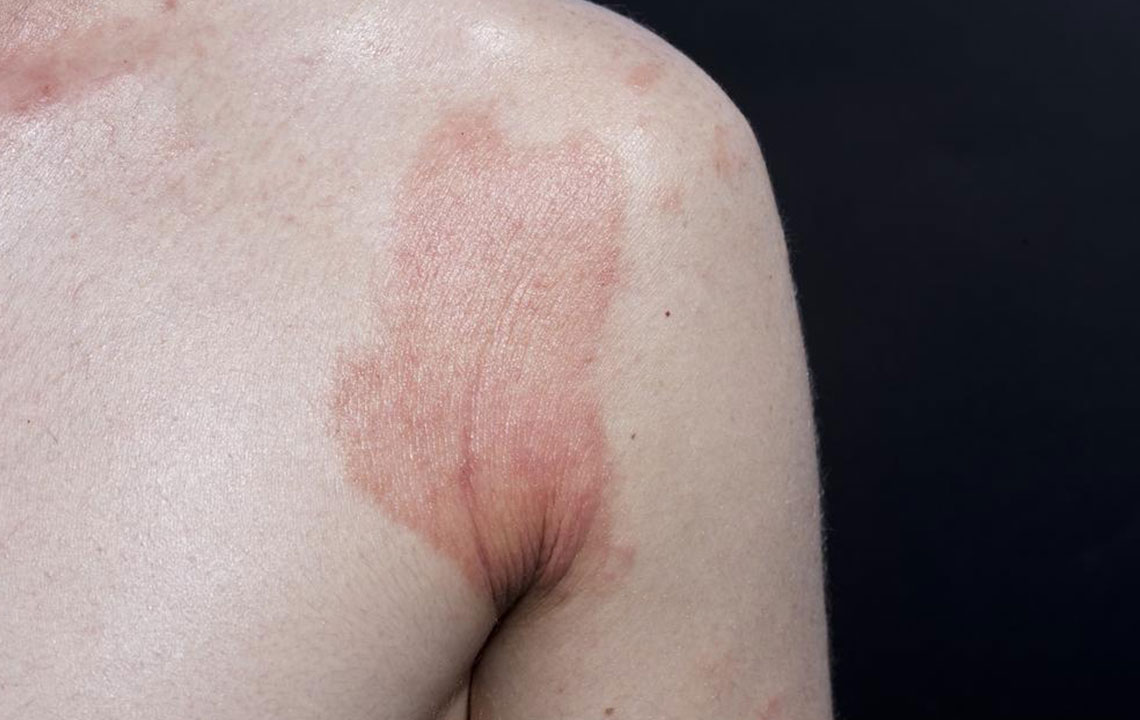Contact Dermatitis – Symptoms, Causes, and Treatment Options
Are you experiencing redness on your skin all of a sudden? Redness on your skin is accompanied by an itching or burning sensation? Well, many of you may consider it as a sign of allergy, which will get automatically cured with time. Though mild allergies may at times cause red rashes on the skin, it may not always be self-healing.

Signs and symptoms defining contact dermatitis
To ease the diagnosis of patients, contact dermatitis symptoms have been further sub-divided into two categories: these include irritant contact dermatitis and allergic contact dermatitis.
Though both types of contact dermatitis cause red and itchy rashes, the one that occurs due to allergic reactions comes along with dry, flaky or scaly skin, oozing blisters, hives, or sun sensitivity. Apart from skin redness, some may also get leathery or darkened skin with a burning sensation. In case of facial or groin allergies, patients may also experience swelling of their skin. Extreme itching is also not quite uncommon with allergic contact dermatitis. Irritant contact dermatitis comes along with blistering or cracking of the skin. Swelling, tightness, or stiffness of skin along with ulcerations and open sores leading to crust is also not uncommon in case of irritant contact dermatitis.
Causes of contact dermatitis
While symptoms are divided into two categories, causes are further divided into three sub-divisions, which are contact dermatitis, photo-contact dermatitis, and irritant contact dermatitis. Allergic contact dermatitis, as the name says is caused when the skin gets exposed to any allergy causing foreign substance. The outbreak occurs when the body starts releasing inflammatory chemicals after coming in contact with the allergen. It is generally marked with irritated and itchy skin. Gold or nickel jewelry, chemicals, and perfumes in skincare products, poison ivy, or poison oak or latex gloves are the major elements leading to red, itchy rashes from allergic contact dermatitis.
Photocontact dermatitis is a rare case and crops up when the skin gets exposed to different skin products containing active ingredients leading to irritation. In most cases, the irritation starts only when the skin is exposed to sun and not immediately after applying the product.
Known to be the most common type of contact dermatitis, it occurs when the skin accidentally gets exposed to any kind of toxic chemicals present in detergent or any other products. Apart from detergents, toxic elements leading to the red itchy rash can be pepper spray, kerosene, drain cleaners, bleach, or even battery acid. Soap, and at times water, may also lead to this condition.
Treating the red itchy rashes from contact dermatitis
Generally, avoiding the exposure to irritants or allergic causing element helps in controlling the rashes. Washing the affected area with lukewarm water can also be helpful to some great extent. Apart from that, you can also apply unscented petroleum jelly or coconut oil to the affected area. Organic aloe vera gel is also a useful option for the treatment of contact dermatitis. Applying home remedies can help in curing the red, itchy rashes in most cases, yet some may also require medical attention.
Consulting a doctor is recommended in cases where the patient does not get any relief by applying the home remedies. Studies indicate that the rashes get healed in 20–25 days. If the rashes persist longer, it is better to seek medical aid. A doctor’s advice is necessary when there is severe itching leading to sleeping difficulty or when there is sudden widespread rash along with pain. Rashes on the genitals or face should also be dealt with immediate care. Medical treatment is also recommended when there are blisters on the skin. Immediate attention should be given if the infection starts spreading to other areas. The outbreak of red, itchy rashes from contact dermatitis can recur any time the skin is exposed to the allergens or irritants. Therefore, be careful about the products you use.
Though contact dermatitis is considered to be the major cause of red, itchy rashes, it can also be a symptom of eczema as well. Some people also get these rashes after a viral infection or from flea bites. Shingles, scabies, scarlet fever, and hay fever also often leads to red itchy rashes in different areas of the skin. Diaper rashes can also make the skin of a baby red and itchy. Candidiasis, measles, and sepsis may at times cause red, itchy rashes in different areas of the body. Therefore, it is important to diagnose the condition thoroughly before choosing a medicine.











